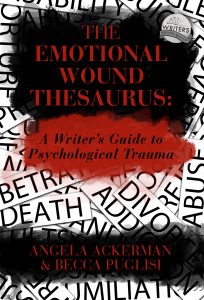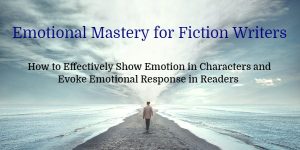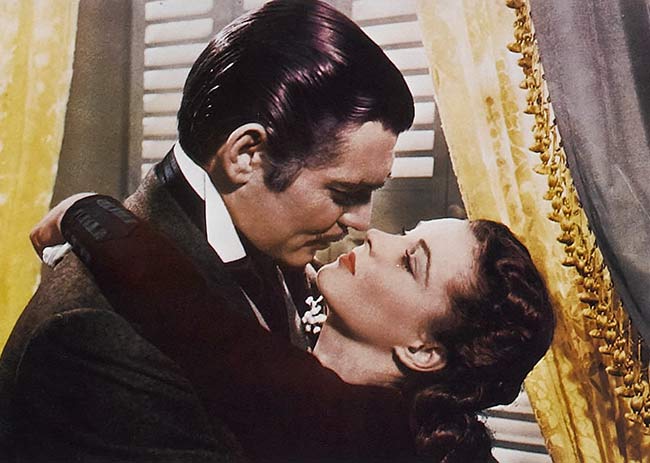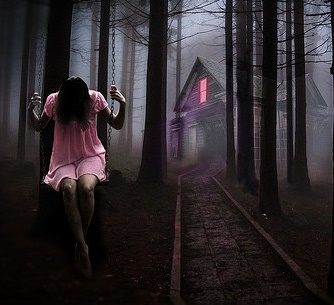Character Wounds and Emotions: The Danger of Digging Too Deep
Today’s guest post is by Becca Puglisi.
With the release of our latest book, Angela and I have been flitting around the internet, talking here, there, and everywhere about emotional wounds and their effects on our characters. The discussions have been lively, with most writers agreeing that unearthing those events from the past is a crucial part of understanding who a character is in the current story. What many people don’t consider, though, is how difficult this process can be for the writer.
We discovered this firsthand while drafting the entry portion of The Emotional Wound Thesaurus. To get the details right, we researched more than 120 different traumatic events, including the fears and false beliefs they may spawn, which habits and behaviors could emerge, and how flaws might develop in the character’s attempt to protect herself from such a thing happening again.
It was, to be honest, emotionally exhausting—reading about the ways people can hurt each other and the baggage we’re all carrying around—the process took longer than we’d thought because we had to pace ourselves, often only writing one or two entries per day.
This is the danger of deeply examining our characters’ pain and negative emotions; it’s easy to become emotional ourselves or to bump into a wounding event that hits too close to home.
Digging Deep Can Spark Personal Trauma
To keep those feelings at bay, we’re tempted to skirt around them, which is good for us in the short term but doesn’t do much for the story, resulting in emotionally tepid scenes and wounding events that feel shallow. Trauma research can waken our own latent memories and fears, making us want to retreat and possibly abandon a story with great potential.
 Yet, exploring this important area of a character’s past is crucial. If we want to tap into their feelings so we can then convey them accurately to readers, we have to be willing to fully explore them on the front end.
Yet, exploring this important area of a character’s past is crucial. If we want to tap into their feelings so we can then convey them accurately to readers, we have to be willing to fully explore them on the front end.
So based on my own experience, I’d like to share some preventive measures for researching and writing these scenes without undue emotional harm.
- Pick a Safe Place. When you know you’re going to be researching something difficult or writing a highly emotional scene, plan ahead. Instead of working at the coffee shop or library, consider relocating to a private spot, where you’ll have the appropriate time and space to process the resulting emotions.
- Incorporate a Time Buffer. Emotional scenes take longer to write than their lighter counterparts, and it’s likely that you’ll need some time afterward to decompress. As a result, it’s not a good idea to tackle them over your lunch break or just before bed. Give yourself extra time for these scenes and allow for a period afterward to wind down and get back into a calm state of mind.
- Take Frequent Breaks. If you’re anything like me, you’ll be tempted to push through these difficult scenes just to get them over with. But that’s not going to give you the best results. Instead, when you feel yourself getting overwhelmed or your focus starts to slip, take a break. Grab a hot shower, take the dog for a walk, wrestle with the kids—do whatever soothes you so you can get back to work, fully charged, when the time is right.
- Include Motivational Rewards. It’s my firm belief that whoever said hard work is its own reward wasn’t doing the really hard work. When we’ve got something particularly difficult to do, we often need other motivations to get us across the finish line. What is that for you? Brunch at your favorite restaurant? A binge session on Netflix? A big bowl of chocolate ice cream? Set up those rewards in advance so you have something extra to look forward to when that scene or chunk of research is finished.
- Circle the Wagons. Accountability is a beautiful thing, and when the right people are involved, it can help us get through the hard stuff. When you know you’ve got a rough scene to plan or write, rally the troops. Call a friend and ask her to say a prayer or send a message of encouragement that morning. Let her know you might need to call if things get too hard or you need a break. We all have people who are willing to be there for us. Don’t be afraid to ask them for help.
Researching wounds and writing emotional scenes is HARD. Like well-intentioned bystanders trying to save a floundering swimmer, it’s easy to get pulled down in the process. Keep that from happening by utilizing some of these techniques, and the process becomes much easier. Not only will the job feel more manageable, you’ll end up with the information that’s so desperately needed to create well-rounded characters and emotional moments that readers will remember.
 Becca Puglisi is an international speaker, writing coach, and bestselling author of The Emotion Thesaurus and its sequels, including the latest member of the family: The Emotional Wound Thesaurus. She is passionate about learning and sharing her knowledge with others through her Writers Helping Writers blog and via One Stop For Writers—a powerhouse online library created to help writers elevate their storytelling. You can find Becca online at both of these spots, as well as on Facebook and Twitter.
Becca Puglisi is an international speaker, writing coach, and bestselling author of The Emotion Thesaurus and its sequels, including the latest member of the family: The Emotional Wound Thesaurus. She is passionate about learning and sharing her knowledge with others through her Writers Helping Writers blog and via One Stop For Writers—a powerhouse online library created to help writers elevate their storytelling. You can find Becca online at both of these spots, as well as on Facebook and Twitter.
Want to master the emotional craft of fiction?
Dive into the online course Emotional Mastery for Fiction Writers!
In this course, you’ll be given tools to show emotions in your characters. You’ll be given techniques to help spark emotional response in your readers. What is going to bring it all together for you is practice. Study and practice. And you’ll have exercises in this course to help you put into practice what you learn.
There are two facets of emotion in fiction: conveying what your character is feeling and evoking emotion in your reader. We’ll look at these two facets separately and in de pth. Yet, they are intrinsically connected.
pth. Yet, they are intrinsically connected.
Emotional mastery requires writers to set up the dynamics of a scene in such a visual, textural way that readers can’t help but feel what they are meant to feel. Understanding that emotional mastery requires a twofold approach—the emotional landscape of both the character and the reader—is the first step.
Want to learn how to become a masterful wielder of emotion in your fiction? Enroll in my new online video course, Emotional Mastery for Fiction Writers.
You’ll get lifetime access to all the videos and more than three dozen downloadable assignments. And with a 30-day money-back guarantee, you have NOTHING to lose by jumping in. Sign up NOW.
This course will challenge you to become an “emotion master.” Are you ready and willing to go on this journey deep into emotional territory? If you want your characters to move your readers, take the plunge!












Excellent advice. I know if I have a scene or situation under my nose, I choose a time when I won’t be disturbed, and listen to the music of composers such as Mozart or Handel, which helps me channel the energy. This technique has always worked for me. Then take one of my Big Days Out, where laptops stay home.
Oh, the soothing music is a great idea!
Thanks for having Becca on today! So glad we had the chance to address self-care in a blog post, because it’s something that writers don’t always put as much time into thinking about as we should. Writing takes an big emotional toll, especially when writing these difficult scenes. It can be easy to be pulled down by the experience of it all.
These tips are so helpful. I’m glad it exists. I write crime and horror, and trauma is in almost each of my stories. I can get carried away when writing about my characters’ sadness, and I end up writing chapters and chapters on how they feel while forgetting the plot.
Wonderful tips! We might want to avoid diving into trauma or painful emotions but processing trauma is a step toward healing. I didn’t know it at the time, but I started writing to help me through a painful time in my career, and it was very healing.